There are many reasons why certain plants should not be planted together. Sometimes it is a matter of height. For example, a tall tomato plant will steal the sun from smaller plants nearby. Or it could be a matter of moisture. Mint, a water seeking plant, and a desert cactus will not do well next to each other since they have conflicting needs.
Another problem is plants that are susceptible to the same diseases. For example, I live in a very humid environment and have problems with a fungus on my squash. If I plant melons too close to the squash, they will also be infected. By keeping them separate, the melons survive long enough to produce a crop.
Additionally, there are plants that chemically damage other plants or prevent their growth. These plants are called allelopathic plants. They leave behind chemicals that can harm or kill certain other plants. Many of the plants mentioned in this article are allelopathic. You may be planting these plants together and then wondering why your plants aren’t doing well, especially if you have a small garden where the plants are all snuggled in together.
Allelopathic plants make planning your garden more difficult. Most home gardeners have not considered allelopathic chemicals, and simply plant wherever they have space. I suspect that allelopathic chemicals are probably the source of many of my crop failures over the years. Now that I know about these plants, my crops are more reliable.
Here are some plants that do not grow well when planted together:
Potatoes
Potatoes have problems with many plants. I tend to stick them off in a far corner of the garden because they don’t grow well with many of the plants in my garden.
Potatoes and tomatoes are members of the same family, but they do not grow well when planted together. Potatoes slow the growth of the tomato plant and themselves become more susceptible to Phytophthora, known as potato blight, when the plants are together. When rotating plants, do not plant potatoes or tomatoes where the other grew the previous year.
Potatoes also don’t play well with cucumbers, melons, tomatoes, squash, turnips, or sunflowers.
Beans and Peas
Both peas and beans have negative effects on some plants including all kinds of peppers, sweet and hot. Beets are also affected by pole beans of all kinds.
Broccoli and Cauliflower
Neither broccoli or cauliflower will grow well near peppers, strawberries, tomatoes, and squash of all types, including zucchini, yellow squash, and winter squash like pumpkins.
Cabbage and Cauliflower
When cabbage and cauliflower are planted together, they are more likely to be affected by Plasmodiophora brassicae, also known as club root. The fungus causes the roots to swell and become unable to take up water and the plant quickly dies. Radish and tomato also do not do well near cabbage and cauliflower.
Related: 5 Survival Foods Your Grandmother Used To Make
Asparagus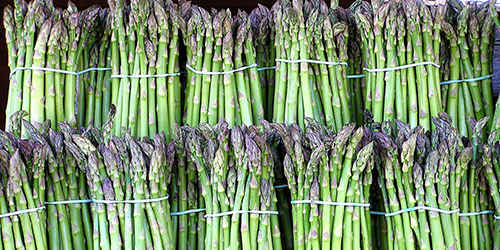
Asparagus does not like other plants growing too close, so give the bed a little space. It is especially vulnerable to poor growth when planted next to onions, garlic, and potatoes.
Brussel Sprouts
Another cruciferous vegetable, brussels sprouts don’t grow well next to strawberries or tomatoes.
Kohlrabi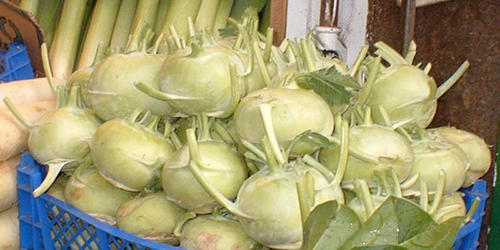
Kohlrabi is a cruciferous vegetable in the cabbage family and like other members of the family it does not like to be planted near pole beans, tomatoes, or strawberries.
Carrots
Carrots don’t grow well when planted too close to dill. I learned this one the hard way. I had conditioned the soil perfectly for those carrots, but they ended up small and malformed. The dill had a very noticeable effect on the crop. Now, I know to keep them separate. Carrots don’t like to share space with parsnips, either.
Celery
Celery is a little difficult to grow under normal circumstances, but for best results, it should never be planted near potatoes or parsnips.
Corn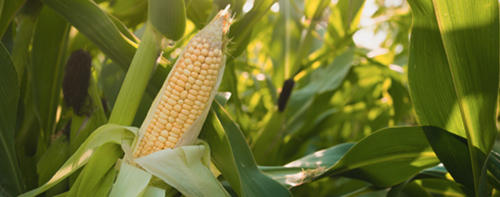
Corn and tomatoes should be separated due to their susceptibility to a common fungal infection. If your tomatoes become infected, they will infect the corn if they have been planted too close together. Both plants are also susceptible to cotton bollworm, also known as corn earworm and tomato fruit worm, another good reason to keep them apart.
Cucumbers
Cucumbers are one of the first vegetables that many new gardeners plant and they usually give good results. However, they do not like to be planted near potatoes, tomatoes, cauliflower, or any of the strong aromatic herbs like cilantro, basil, rosemary, thyme, or lavender.
Related: How To Pickle Cucumbers
Onions and The Allium Family
Onions, garlic, leeks, and shallots have a discouraging effect on beans and peas. When planted nearby, plants in the Allium family, like onions, stunt the growth of beans and peas. But, beans and peas have their own effects on other plants.
Beets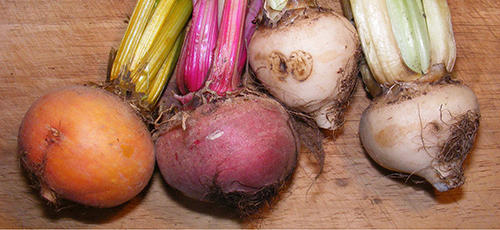
Beets do not grow well near mustard plants or any member of the bean or pea family.
Sunflowers
Sunflowers emit a chemical from their roots that prevents nearby plants from growing and competing for nutrients. This chemical affects an area of at least 12 inches around the plants. The seed shells also contain toxic chemicals that will kill grass and other plants, so harvest the seed heads before the seeds begin to drop. Don’t plant other plants within 12 inches of sunflower plants. Also be aware that they grow very tall and can shade out sun loving plants.
Related: 21 Wild Edibles You Can Find in Urban Areas
Marigolds
Marigolds are a popular addition to the vegetable garden because they keep away so many pests. However, they have a detrimental effect on beans and peas. Pole beans, bush beans, and peas should be planted far away from the marigolds.
Planning your garden is hard enough when you are limited in size and adding this information will make it even more difficult. However, it is work considering the effects that plants have on each other when you draw up your garden plan. Otherwise, you may end up with a disappointing yield and never understand why.
Lettuce
Lettuce is easy to grow when planted away from beans and beets. Surprisingly, they also do not like to be near parsley.
Melons
Melons are also susceptible to funguses caught from squashes and also should not be planted near potatoes or cucumbers.
Tomatoes
Cucumbers, cilantro, and tomatoes are delicious together, but they do not like to grow too close together.
You may also like:
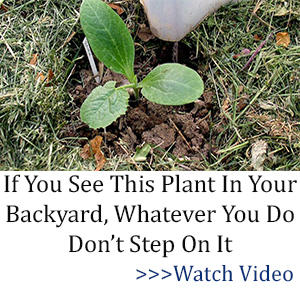 Top 27 Medicinal Plants to Learn For Survival
Top 27 Medicinal Plants to Learn For Survival
This Homemade Device Can Power Up Your Entire House 7 Days In A Row (Video)






















A good follow up to this would be an article about companion planting. Beets and garlic, carrots and onions, and corn, beans, and squash (referred to as the three sisters by native Americans) are all examples of crop combinations that benefit one another.
I second the motion.
I have heard before, that asparagus, and garlic do not grow well together, how ever did not read before planting them next to each other, In my garden the grow well together
How far should bush beans and marigolds
Agreed. Also, when you say it should not be planted “close” to another. How close is close in feet? To you close may be 12 inches, to another 3 feet, to another 6 feet. It would be nice to be more specific…thanks
So next, we need an article on companion planting to complement this article.
How close can onions and peas be planted?
Great article. Thanks Diane
Thank you, very helpful info trying to plan my first ever garden.
good advice
Rather than just listing what makes for problem neighbors, how about a map of a good garden layout? (Plot it as a rectangle, since that is how most large gardens are laid out.)
how much is a printed book?
Hi Richard,
The Lost Book of Remedies is available for $37 + $8.99 (shipping and handling). You’ll also receive the digital version of the book plus 2 Bonuses (The 80 Square-Feet Medicinal Garden and Disaster Medicine: A Handbook for When Help Is NOT on the Way)
Hope this helps.
Really appreciate this article! What a time saver. I would love to hear what plants you like to put together. I live in Las Vegas. Can you recommend a good resource for growing outdoors for the extremes of the desert? Either way, good job on the article
Raven,
The University of Nevada Agricultural Extension Office has that info.
Companion planting boosts plant growth and fertility. The donts may be ultimately more important that the do’s.
Great article! Also note that raspberries and blackberries, which are usually easy to grow (and hard to kill!) don’t do well with potatoes.
Seems like NOTHING does well near potatoes – they are the most disliked ‘crop on the block’, poor babies. Grown in solitude, eaten with delight!
Going to try using potato grow bags this year.
No worries about soil issues that way.
Marigolds and Borage both are great deterrents for the Tomato Hornworm.
Before I planted those around the tomato plants, hornworms nearly stripped all my tomato plants.
Now, I might maybe see one hornworm.
One problem I have is the Japanese Beetles messing things up badly.
And squash bugs….
No mention of biochar and subsequent planting.
Great stuff!!
Enjoyed the article. Have been gardening for years, but didn’t know a lot of the planting do’s and don’ts.
I have a book printed during WWII, during the Victory Garden era. It had between it’s pages, an article from a Portland newspaper that mapped out a garden layout very nicely. Of course, some of our tastes have changed since then but the concept is very useful. The big problem is that I wouldn’t know how to transfer that info to this forum.
The gardening book “Square Foot Gardening” has some small garden layouts.
I would love to see it!!! Could you maybe take a pic and email it to me?? ?
So much varying info on the net. I just read an article that stated beets do not do well next to POLE beans but thrive next to BUSH beans and peas, contrary to your article. It doesn’t make sense to me but that is what it stated. The source was Companion Planting for beets by Marlene Affeld Insteading.com.
Gen2: That is part of the problem with on-line articles. Many are written repeating urban legends that have no basis in fact. Many are well-meaning but just plain wrong. That’s why it is important to know who the author is and what their credentials are for posting the information they post.
An additional brake on bad info is a website like this where followers can chime in and point out the fallacies that sometimes creep into articles.
That’s one of the reasons I find this website so helpful. The comments sometimes are more valuable than the original article, but it stirs readers to comment and point out errors or add valuable information to the article from first hand experience they have.
It doesn’t hit a home run every article, but neither did Babe Ruth hit a home run every time at bat. Even articles that completely miss the target will have comments from readers that add the real dope.
Yes, I like this website too. I planted beets next to bush beans last summer and both produced just fine.
How far away should the marigolds be from my bush beans and pole beans?
What is considered close to or next to? If I have something 3′ away, is that close to or if it’s 5′ but there’s something between it, is that ok? My gardens are only so big.
Great article. Very well done.
I think these are good ideas but since everyone’s growing environment is different the only way to really tell what grows well in your location, next to each other or apart, and how far apart if not compatible, is trial and error, guided by advice such as this article. I have tomatoes and eggplant growing next to each other, the eggplants are doing fine but the tomatoes are not doing nearly as well as I grew in previous years when I did not grow eggplants. Is there a compatibility problem? Or is it something else like the tomatoes are in an entirely different location than in previous years, but still in full sun? or is it weather? my watering routine? I’m still on my never ending gardening learning curve, I’m slowly getting better, but I definitely still have lots more to learn, and really appreciate all the positive advice presented, both articles and comments..
I discovered the Moringa “trees” I’m growing in containers and are currently flowering attract humming birds, which is another bonus for planting a few Moringa – and you can eat the leaves (very healthy).
Does anyone know of any companion / keep them separated type articles or websites for fruit trees? I have lemons, apples, oranges, and an avocado in containers all mixed in with my vegetables, and I have no idea if they grow better with other plants or should be kept separate. I also have two grapes in containers and have four containers with potatoes next to them -, the grapes are doing great but the potatoes are finicky, but I don’t know if it’s because of being next to the grapes. I also have one blackberry and one raspberry in containers and have no idea of companion placement for them either.
If you are setting up an orchard I found out that you should not plant Cherry trees anywhere near Bartlet Pear trees. I have a very large Cherry tree about 100ft from where I planted two new Pear trees. A red Bartlet and and Dianjou Bartlet. The first year the young pear trees were fine. But after about two months into the second growing season, the leaves on the pear trees started turning dark brown then black. The trees died within two weeks. I checked with a local nursery and they asked if I had any Cherry trees close by. They shed pollen that affect the Bartlet pears. I have two varieties of Asian Pear trees and they do just fine. In fact I get up to 125#s of pears off of the three dwarf trees. I will need to plant Bartlets on the other side of my property or abandon the idea of having Bartlet pears.
You have to plant 2 apples trees next to each other and same thing with all other fruit trees, you can’t just have one of each fruit trees, they don’t grow healthy and fruitful that way.
You can grow two cherries ? trees far away from all other fruit trees. Just spaces out your marigolds about 20 inches apart from your vegetable!!
Vae, I have one Improved Myers Lemon that flowers and fruits three, sometimes four times a year, with no other lemon trees nearby so I think it self pollinates. This little tree, more like a bush really, produces so many lemons I tell all my neighbors to take as many as they want, and I still have to take most to work to give away, otherwise they eventually over-ripen and fall off.
https://selfsufficientprojects.com/vegetables-you-can-re-grow-from-scraps/?utm_source=SSP&utm_medium=newsletter
Cannot remember where I read this or heard this, but it works so great! I think it was in a specialist’s gardening book… Plant zinnias nearby your squash plants, and the squash vine borer will not attack your squash plants. We have done this for 4 years now, and the squash vine borer devils have left my plants completely ALONE! THANK YOU, GOD!! Used to decimate my crops on a regular basis…
We also have wonderful results with the Cracker Jack African Marigolds that grow like a small shrub with gorgeous flowers nearly the size of a baseball!! WHAT A PRETTY QUILT these tucked in flowers provide, plus all the protection for our veggies!!